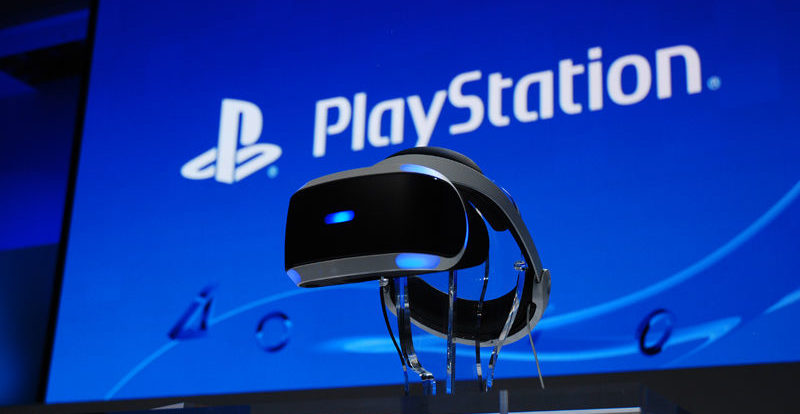Interactive

Sony: More to VR than Games
Story Highlights
Although Sony’s initial virtual reality (VR) focus is aimed squarely at the video game market with the PlayStation VR (PS VR) headset for the PlayStation 4 (PS4), the company sees potential for other applications, including live sports and education.
That’s according to Andrew House, Sony Interactive Entertainment (SIE) president and group CEO, speaking June 29 at the company’s investor day in Tokyo.
Sony has invested heavily on growing its PS VR and PlayStation Vue (PS Vue) over-the-top TV streaming service, House said. And the first part of Sony’s VR strategy is to successfully launch PS VR “primarily as a game platform” to be used initially in conjunction with the PS4, he added.
The PS VR headset ships Oct. 13 in the U.S. at $399, and as part of a $499.99 bundle with the headset, two PlayStation Move controllers, the PlayStation Camera and PS4 VR title “PlayStation Worlds.”
“There are several key benefits that I think PlayStation VR has vs. the competition,” House said. First, thanks to the PS4, PS VR has “unified architecture” that will provide a “very stable quality of experience that developers can rely on,” he said. The hardware pricing is also “very affordable,” he said. After all, the rival Oculus Rift costs $599 for a comparable bundle that also includes accessories and software, while the HTC Vive is even costlier, at $799.
Marketing efforts supporting PS VR will have to be different than those for the PS4 because “this is a kind of product that has to be experienced really to be understood,” House said. Therefore, Sony will focus on opportunities that will allow consumers to actually use the product, he said. “We really believe that playing is believing,” he said.
PS VR may also help boost demand for console gaming in Japan, where PS4 sales growth hasn’t been nearly as strong as the U.S., he said. However, it’s “a little tough to predict” what degree of appeal PS VR may have among Japanese consumers, he conceded. But support for PS VR has grown “very, very quickly” among the Japanese content creation community, he said.
VR applications beyond gaming are part of a “longer-term strategy” for Sony, House said. Live sports and education are a couple of the areas that the company is “starting to focus on,” he said. But Sony “will build this market carefully and cautiously, looking at areas where we can maximize the right business-to-business model,” he added.
“I tend to believe that this generation of VR lends itself more to short-form content” than longer-form experiences, he conceded. But “I don’t necessarily see that as a deficit or a negative,” he said, comparing the VR experience to a theme park ride – something short but “very intense and … very enjoyable.”
Sony, meanwhile, is investing to “accelerate growth” of PS Vue, he said. To do that, the company has focused on expanding the skinny bundle’s availability and broadening the number of devices it’s available on, he said. PS Vue is now available nationwide in the U.S. for the first time and recently became available for Android and Roku devices, he pointed out. That’s “critical” and “represents a new phase” for the PlayStation business, with a goal of “building a standalone service that is not purely console-dependent,” he said.
Sony’s “next goal” for PS Vue is to “build on awareness” for the service, he said, adding: “We are looking to invest heavily in marketing for PlayStation Vue in order to accelerate that growth.”
The company achieved “solid continued expansion” of the PS4 installed base in the past fiscal year, growing it to more than 40 million units globally, he added. Despite “expectations of decline” in the game console market, Sony has “maintained the fastest penetration in PlayStation history,” he said. At the same time, Sony saw “continued substantial growth” in the company’s network business, with sales growing more than 50% over the previous fiscal year, he said.
House expressed no concern over rival Microsoft offering cross-play functionality across the Xbox One and Windows 10 computers. “It remains to be seen whether there’s … latent large consumer demand for that, but we don’t see it as really affecting or prompting any changes in our thought process and strategy,” he said. “We’ve always tended to believe that a proprietary ecosystem offering a very well-crafted, unified client experience is the way to go, and that sort of remains our strategy.”









